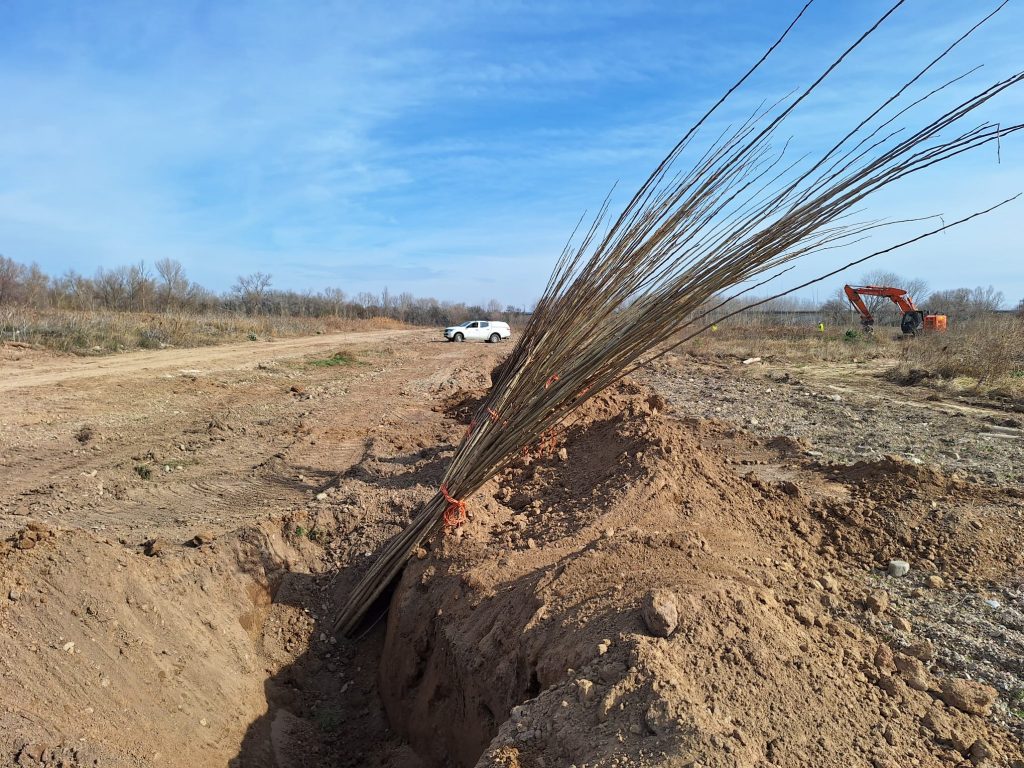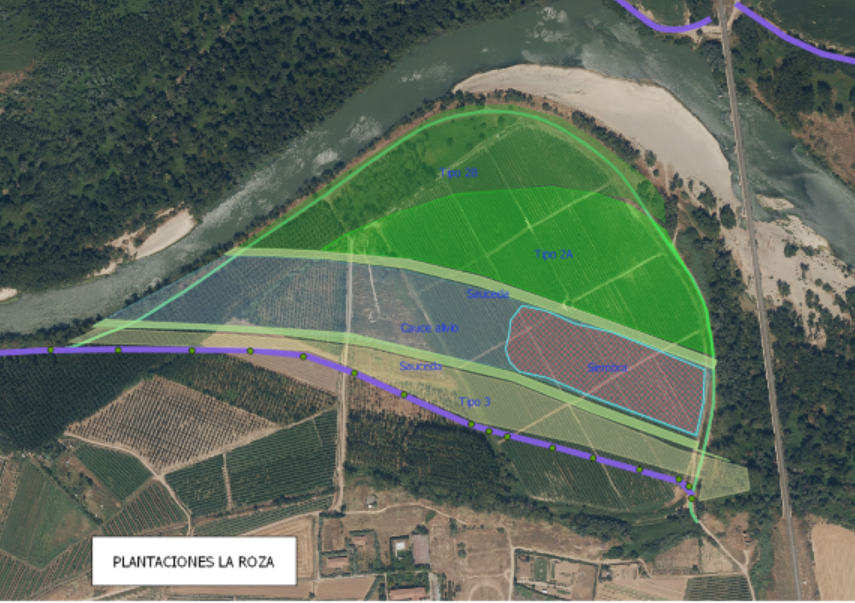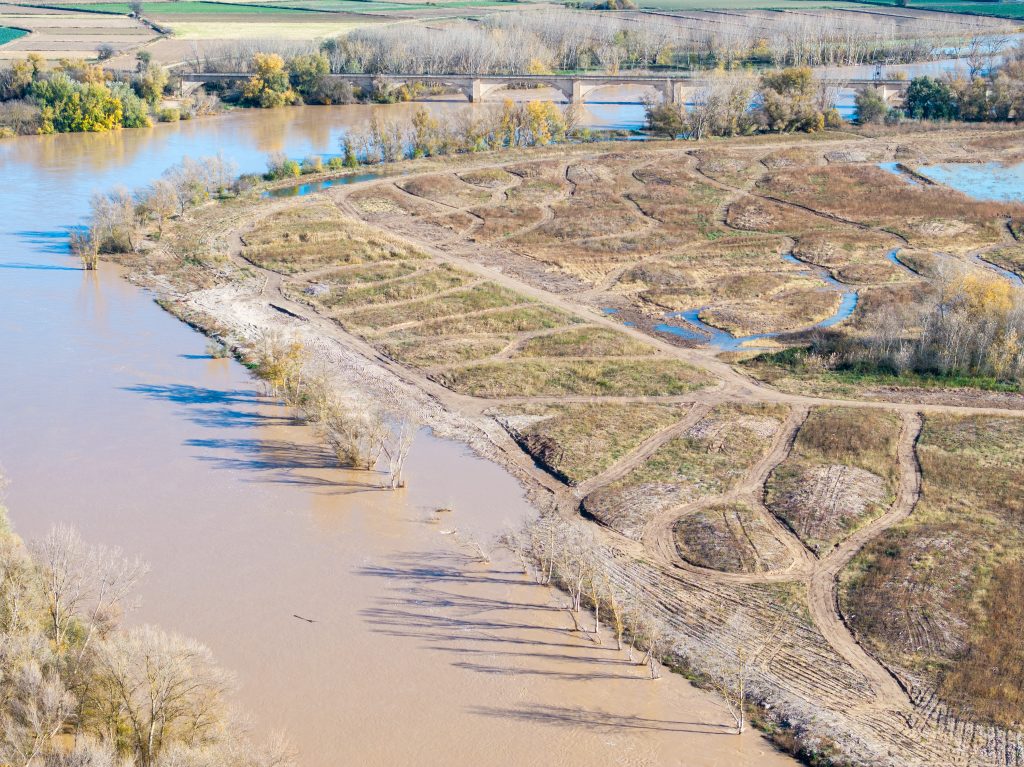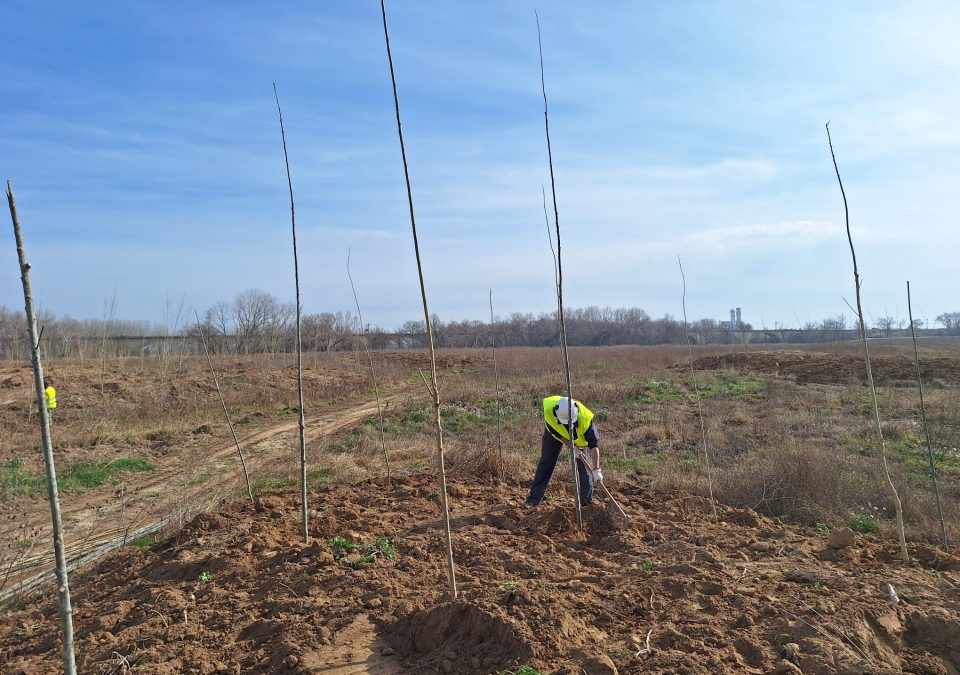The LIFE Ebro Resilience P1 project is closer to completing one of its first milestones. The environmental restoration of the meander of La Roza, in Alfaro, La Rioja, is already underway, an intervention that adds to the already completed morphological adaptation of the Ebro in this area and which has made it possible to recover 22 hectares of river space, a nature-based measure to reduce the risk of flooding.
The environmental restoration is the responsibility of the Government of La Rioja, a partner in the LIFE project, while the morphological adaptation has been carried out by the Ebro Hydrographic Confederation, also a partner in Ebro Resilience P1.
A total of 4,650 specimens of species typical of the Ebro riverbank and its groves will be introduced, imitating the natural growth of riparian vegetation and occupying an area of 12 hectares. This will be in addition to the first plantings of cuttings that were carried out on the limits of the new relief channel integrated in the morphological adaptation.

Specifically, 1,800 Populus nigra (poplar); 1,250 Populus alba (poplar); 1,390 Fraxinus angustifolia (ash); 140 Salix alba (white willow) and 70 Prunus avium (cherry) will be planted.
The planting will be done by creating three distinct zones. The first, a patch close to the current riverbed, forming a 4-hectare black poplar grove-aspen grove. The second is located on the left bank of the relief channel and is an ash grove and poplar grove of 5.5 hectares. Finally, the area between the relief channel and the new river defense, which has been set back to gain river space, will become a 3-hectare mixed alameda. In addition, it includes the implementation of a vegetation cover on 2 hectares.

The intervention of morphological adaptation and environmental restoration of the Ebro in the meander of La Roza has a total budget of 2.2 million euros.
La Roza
The intervention is part of the combined section of actions, a series of mitigation measures that together have a general benefit and that includes the project planned in the meander of El Señorío, in Castejón, Navarra, and the restoration action in the Soto de Alfaro.
A total of 22 hectares of river plain have been recovered and integrated as a protected area in the Natura 2000 Network, with the removal of 1,343 meters of defensive dikes that constricted the river and the construction of a smaller defense (899 meters) and away from the riverbed, returning this space to the river.
In addition, river dynamics have been improved:
– A relief channel has been created connecting the river to the La Roza meander.
– The drainage capacity of the railroad bridge eyes has been improved.
– Invasive flora species have been removed
– A new wetland has been generated
LIFE Project
The LIFE Ebro Resilience P1 project (LIFE20 ENV/ES/00327), approved by the European Commission in the LIFE 2020 call, covers three autonomous communities (La Rioja, Navarra and Aragón), has a duration of 6 years and a total budget of 13,310,350 €, with 55% European funding.
This project is also an example of institutional coordination and cooperation in the intervention section, its partners being the Ministry for Ecological Transition and Demographic Challenge (MITECO), through its companies TRAGSA and TRAGSATEC; the Ebro Hydrographic Confederation; the Government of La Rioja; the Government of Navarra, through Gestión Ambiental de Navarra, S.A. (GAN-NIK); the Government of Aragón and the Aragonese Water Institute.


